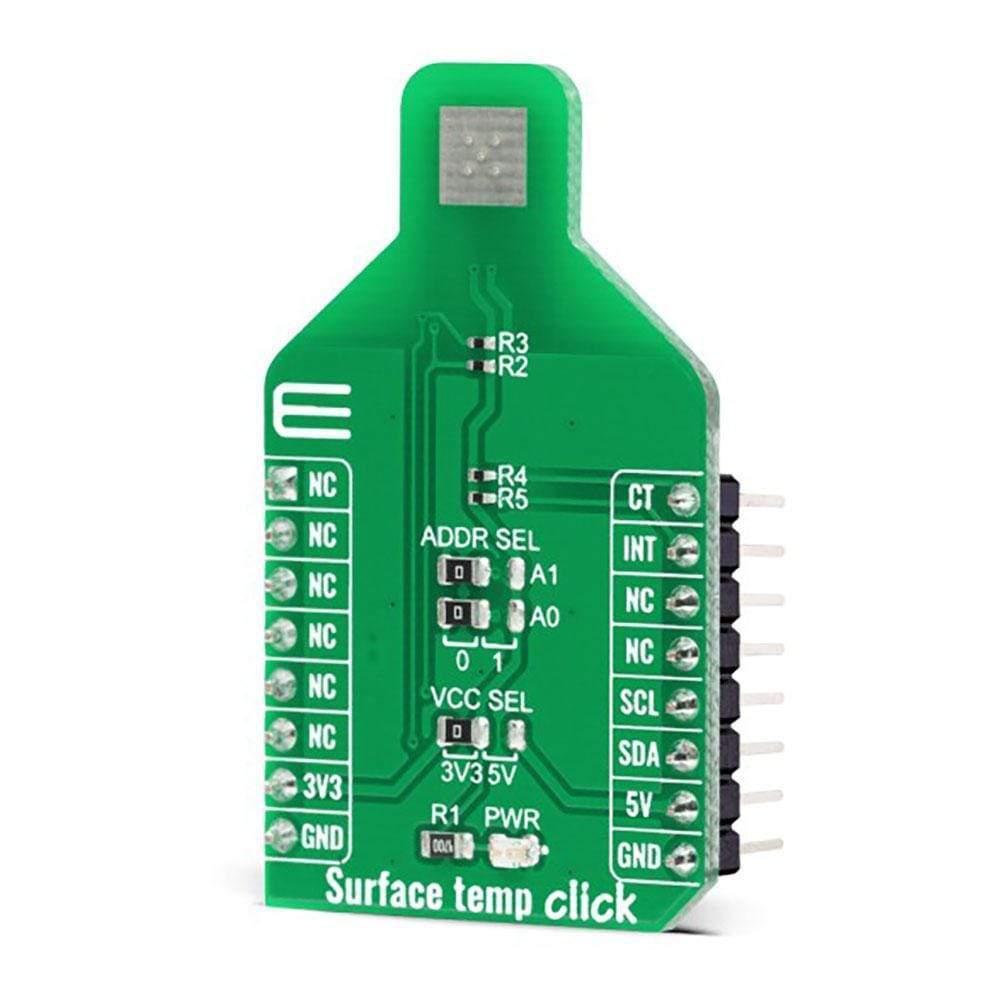
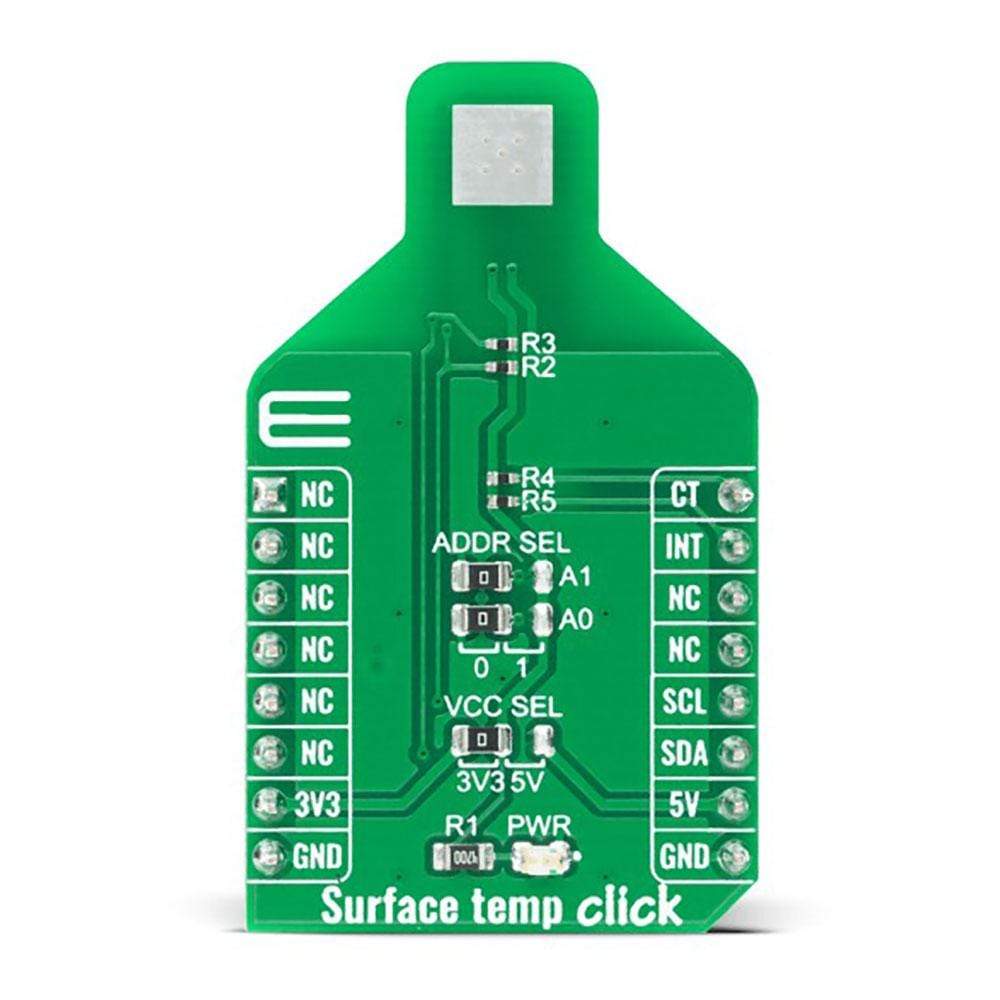
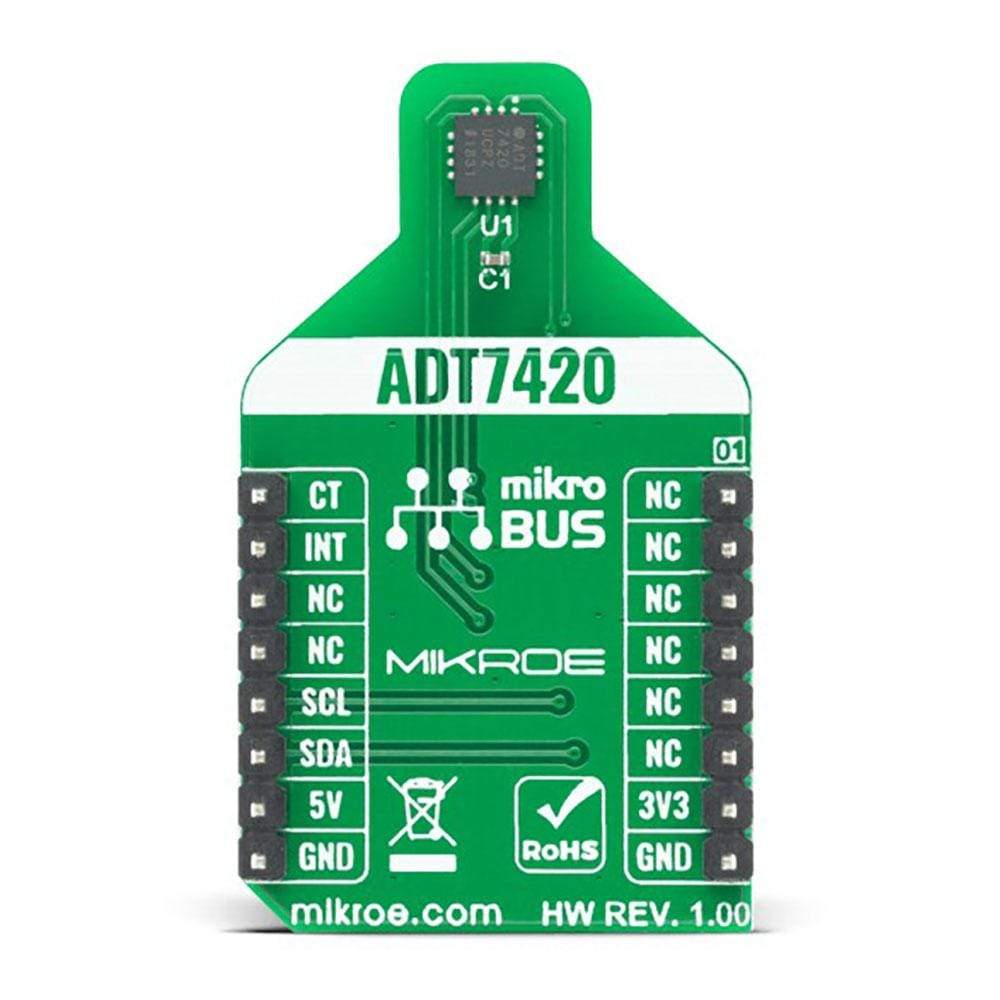
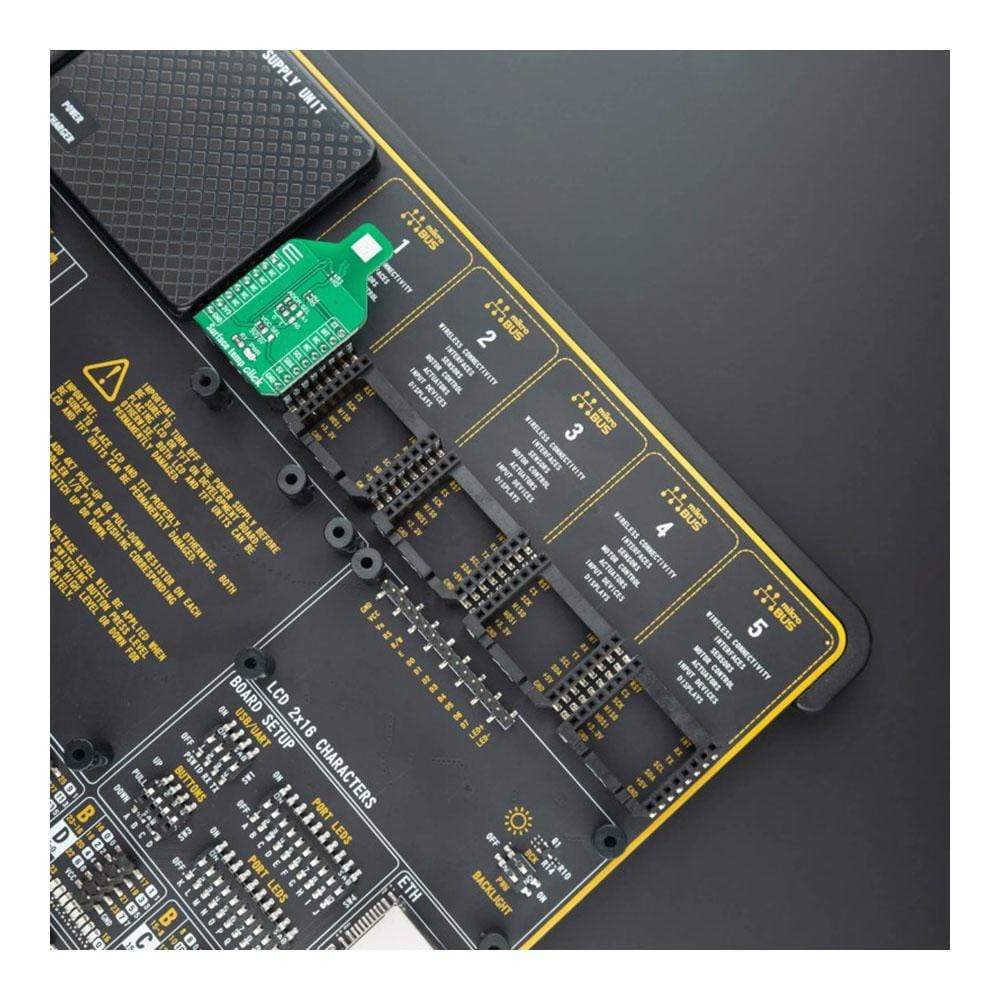
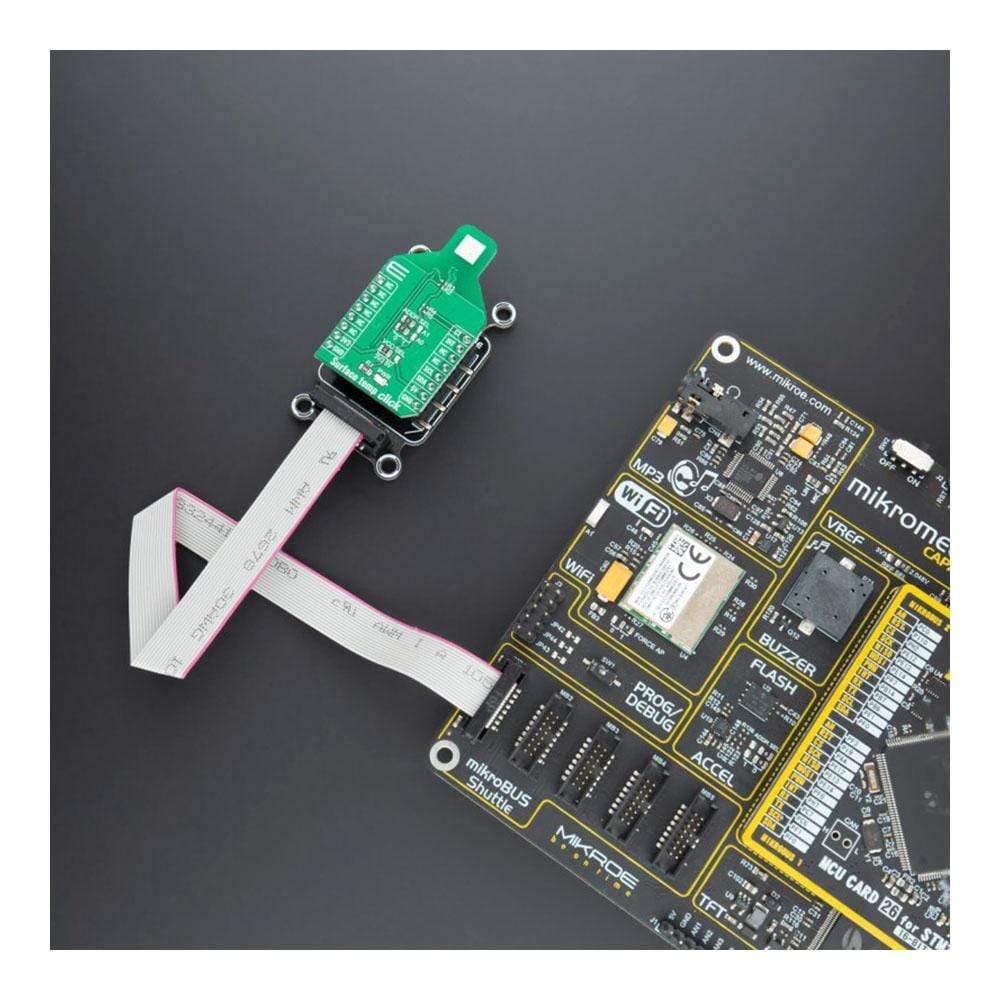
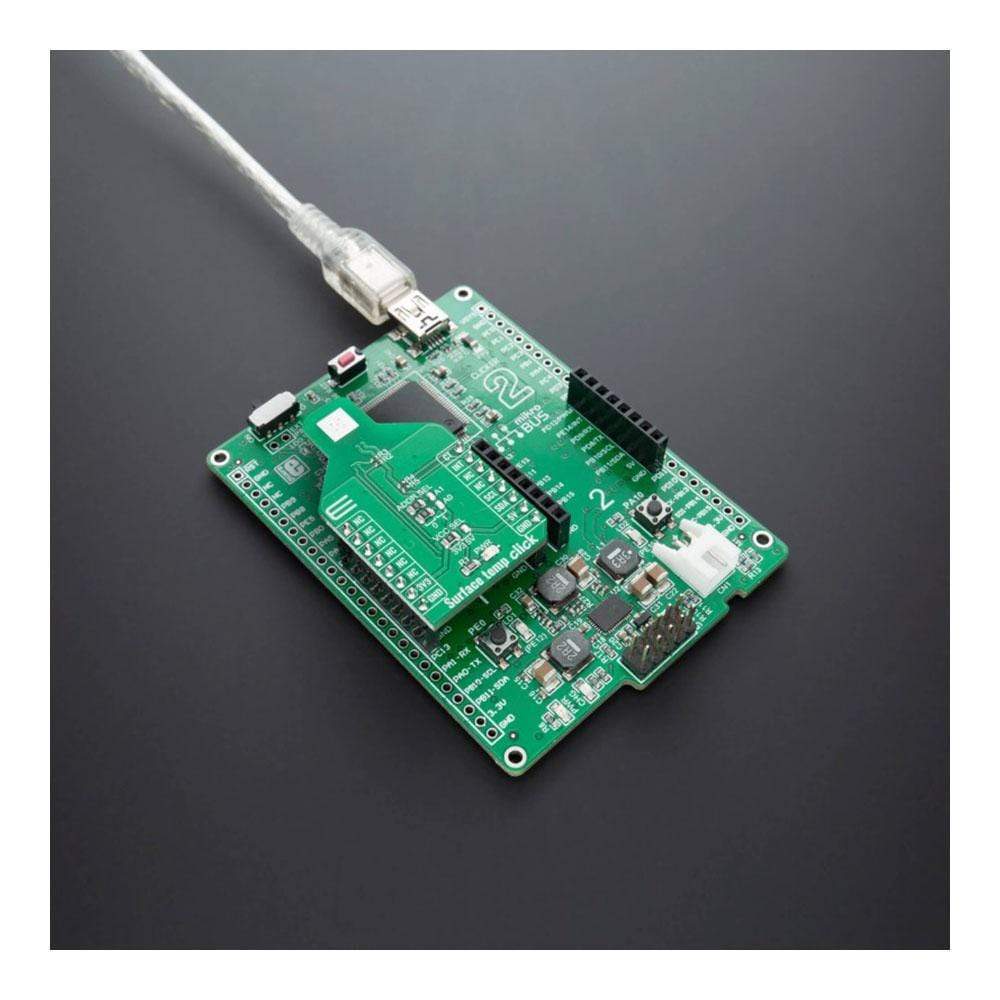
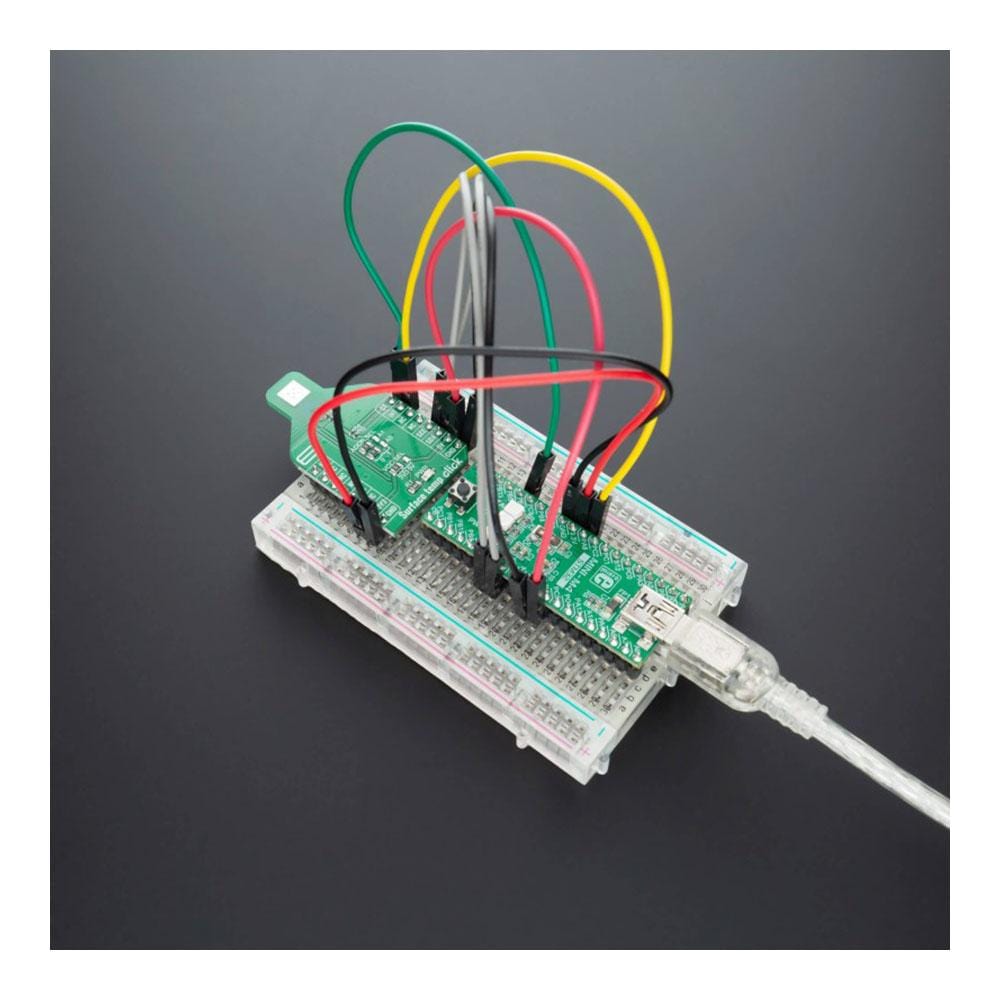
Overview
The Surface Temp Click Board™ is high accuracy digital temperature sensor Click Board™, offering breakthrough performance over a wide industrial range. It is equipped with the ADT7420 - an accurate 16-Bit Digital I2C temperature sensor from Analog Devices. It features high-temperature accuracy, ultralow temperature drift (0.0073°C), fast first temperature conversion on power-up, no temperature calibration/correction required, and more useful features which makes this Click Board™ a great choice for RTD and thermistor replacement, medical equipment, food transportation and storage, environmental monitoring, HVAC, and many more.
Downloads
Das Surface Temp Click Board™ ist ein hochpräzises digitales Click Board™ für Temperatursensoren, das bahnbrechende Leistung in einem breiten industriellen Bereich bietet. Es ist mit dem ADT7420 ausgestattet – einem präzisen digitalen 16-Bit-I2C-Temperatursensor von Analog Devices. Es bietet hohe Temperaturgenauigkeit, extrem niedrige Temperaturdrift (0,0073 °C), schnelle erste Temperaturumwandlung beim Einschalten, keine Temperaturkalibrierung/-korrektur erforderlich und weitere nützliche Funktionen, die dieses Click Board™ zu einer großartigen Wahl für RTD- und Thermistorersatz, medizinische Geräte, Lebensmitteltransport und -lagerung, Umweltüberwachung, HLK und vieles mehr machen.
| General Information | |
|---|---|
Part Number (SKU) |
MIKROE-4205
|
Manufacturer |
|
| Physical and Mechanical | |
Weight |
0.025 kg
|
| Other | |
Country of Origin |
|
HS Code Customs Tariff code
|
|
EAN |
8606027380044
|
Warranty |
|
Frequently Asked Questions
Have a Question?
Be the first to ask a question about this.







